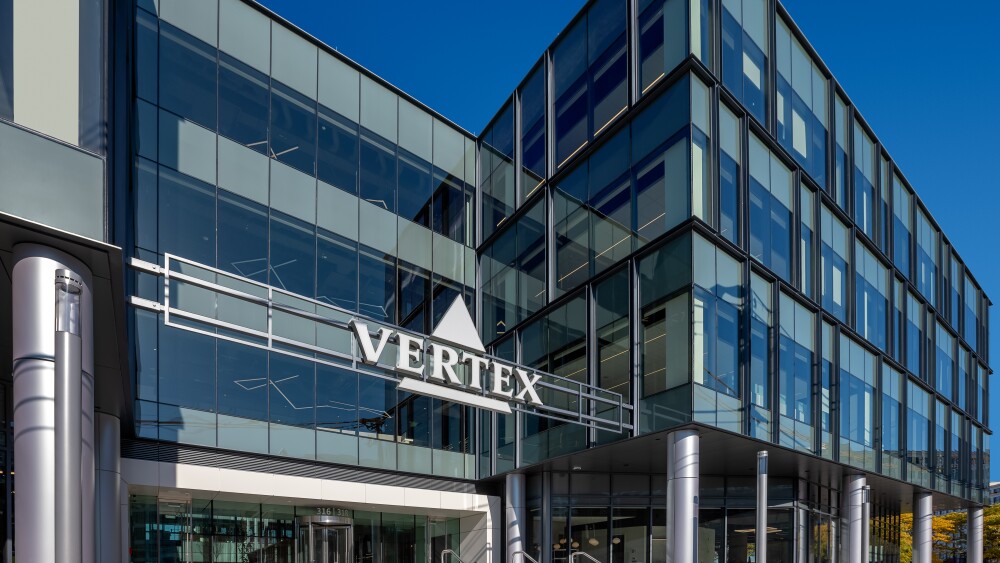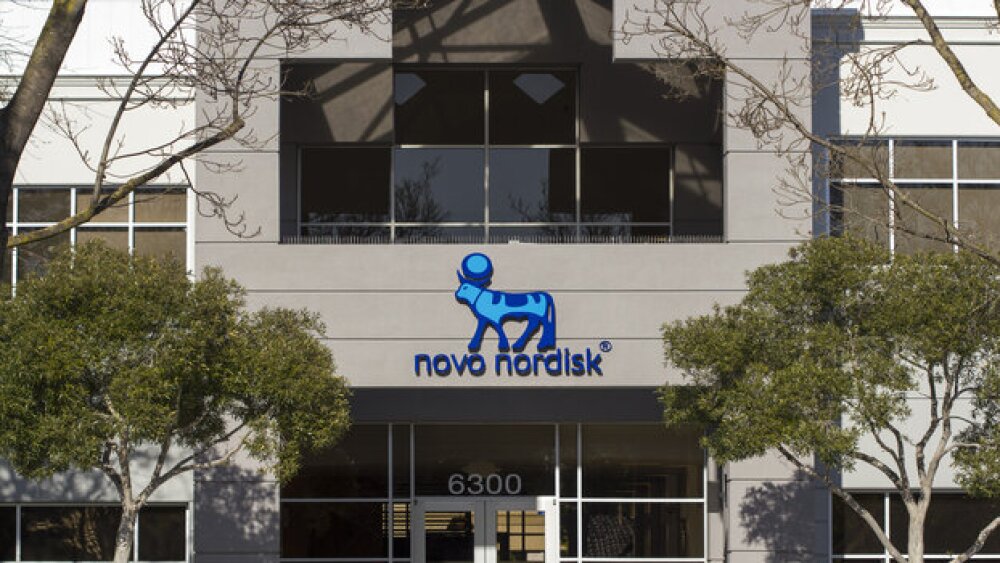The potential approval of Vertex’s IgAN therapy povetacicept in 2026 comes amid launch headwinds for the company’s non-opioid pain medicine Journavx and gene therapy Casgevy.
Vertex clocked 11% growth in the third quarter, meeting investor expectations. But shares of the company saw pressure Tuesday morning as the cystic fibrosis drugmaker’s new products largely stayed in the background. Meanwhile, sales of gene therapy Casgevy actually declined as patients skipped scheduling the procedure over the summer.
The company recorded revenue of $3.08 billion, narrowly beating Stifel’s estimate of $3.06 billion, according to a third-quarter business report released Monday afternoon. Vertex’s cystic fibrosis franchise beat consensus estimates, with Trikafta taking in $2.65 billion and new entry Alyftrek offering $247 million.
But its new non-opioid pain medication Journavx missed analyst consensus of $23.3 million by about 15%, taking in just $19.6 million for the quarter. William Blair attributed this to free drug sampling as Vertex tries to ramp up interest, rather than a lack of demand. Since becoming available in March, Vertex has already filled 300,000 prescriptions through mid-October, the company said.
Vertex’s shares declined about 4% to $409 apiece in pre-market trading on Tuesday morning, compared to $426 at close Monday.
Analysts at BMO Capital Markets called Journavx’s growth “robust,” while noting that continued patient assistance programs may be needed to boost uptake into the next year. Vertex has so far secured coverage from two of the three large pharmacy benefit managers in the U.S., as well as “unrestricted access” through Medicaid for 19 states, the company said.
Taken together, Vertex has support for more than 170 million patients, which the company claims is “more than half” of covered lives in the U.S.
“It’s important to note that we’re building a long-term pain franchise here where, clearly, we want to secure broad access for patients, but we also want to ensure long-term value of our medicines,” Duncan McKechnie, Vertex’s chief commercial officer and head of North America commercial, said during the earnings call on Monday. He added that Vertex is working with a third major PBM to further boost access.
The patient assistance programs may need to continue to encourage more adoption of Journavx, multiple analysts agreed. “Journavx revenue growth continues to be muted even if TRx has been positive with patient assistance programs likely still eating into net price for the remainder of 2025,” BMO wrote.
Vertex will eventually have to phase out the programs, leaving Journavx to speak for itself, BMO added.
“We think this program can build [total prescription] momentum and prescriber awareness, it remains to be seen whether this share capture can be maintained once [patient assistance] programs are removed,” the analysts wrote.
In Cystic fibrosis, Vertex is working to switch patients from its stalwart Trikafta to new kid on the block Alyftrek, approved in late 2024, while simultaneously expanding into new geographies. Alyftrek’s sales results seemed to please analysts, with momentum that points to a steady growth path.
“In our view, more switching will likely happen over time, but given the lack of clear clinical differentiation, many Trikafta patients (per our [key opinion leaders] checks) are OK waiting especially as a switch to Alyftrek requires liver monitoring in the early period,” Stifel wrote on Thursday morning.
William Blair was still optimistic as the new product made some headway.
“In cystic fibrosis (CF), we find early metrics on Alyftrek growth compelling and expect capture of new CF patients, as well as Trikafta switchers, to continue as care providers gain more familiarity and comfort with Alyftrek,” the firm wrote in a note Tuesday morning.
As for Casgevy, sales of the therapy were $16.9 million in the third quarter, which was a 44% decline compared to the previous quarter. William Blair was still encouraged by Vertex’s revenue guidance of $100 million for the full year. However to reach that, Vertex would need to achieve a minimum 128% increase in revenue in the fourth quarter, or about 25 patient infusions.
This could be a steep goal, as Vertex has previously acknowledged that patients tend to delay starting treatment over the holidays. Executives were, nonetheless, optimistic that the gene therapy could achieve growth this year.
“Given the very well understood duration of the treatment journey and the fact that we now have significant numbers of patients at every stage in the process, Casgevy has a strong outlook, and we are excited to serve the growing numbers of patients through the end of this year into 2026 and beyond,” Stuart Arbuckle, chief operating officer, said on the earnings call.
Better Than The Rest?
Amid pressure elsewhere, analysts turned to the pipeline—or as BMO put it: “The kidney is calling.”
Vertex could snag an approval for its kidney disease drug povetacicept by the end of next year. CEO Reshma Kewalramani previewed a data readout for the drug coming this weekend at the American Society of Nephrology meeting in Houston.
“[Povetacicept] data are widely expected to be good, the question being whether they’re clearly better than competitors,” Stifel said.
In its earnings report Monday, Vertex announced that it has fully enrolled the Phase III RAINIER study of povetacicept in IgA nephropathy, which the company expects will be enough to support an accelerated approval filing. Vertex is “on track” to file the first batch of data for its rolling biologics license application this year and expects to complete the submission in the first half of 2026, the company said.
This timing, according to analysts at Leerink Partners, could build up to an approval late next year. “If interim results are positive, it would complete the filing in 1H26 and anticipate approval by year-end 2026,” Leerink wrote in a Monday note.
Designed to be administered via a self-injector, povetacicept is a fusion protein that works by blocking the BAFF and APRIL cytokines, both of which are involved in the activity and survival of immune cells and underpin disease-causing autoimmunity. Aside from IgAN, Vertex is also developing povetacicept for primary membranous nephropathy, a life-threatening kidney disease, for which the drug is in Phase II/III development.
With povetacicept poised for several clinical and regulatory milestones in 2026, BMO expects “investors to shake off any launch headwinds” associated with Vertex’s non-opioid pain medicine Journavx. “With a potential full filing expected in 1H26, povetacicept is quickly moving to become a focal point in Vertex’s evolving late-stage pipeline,” BMO added.







